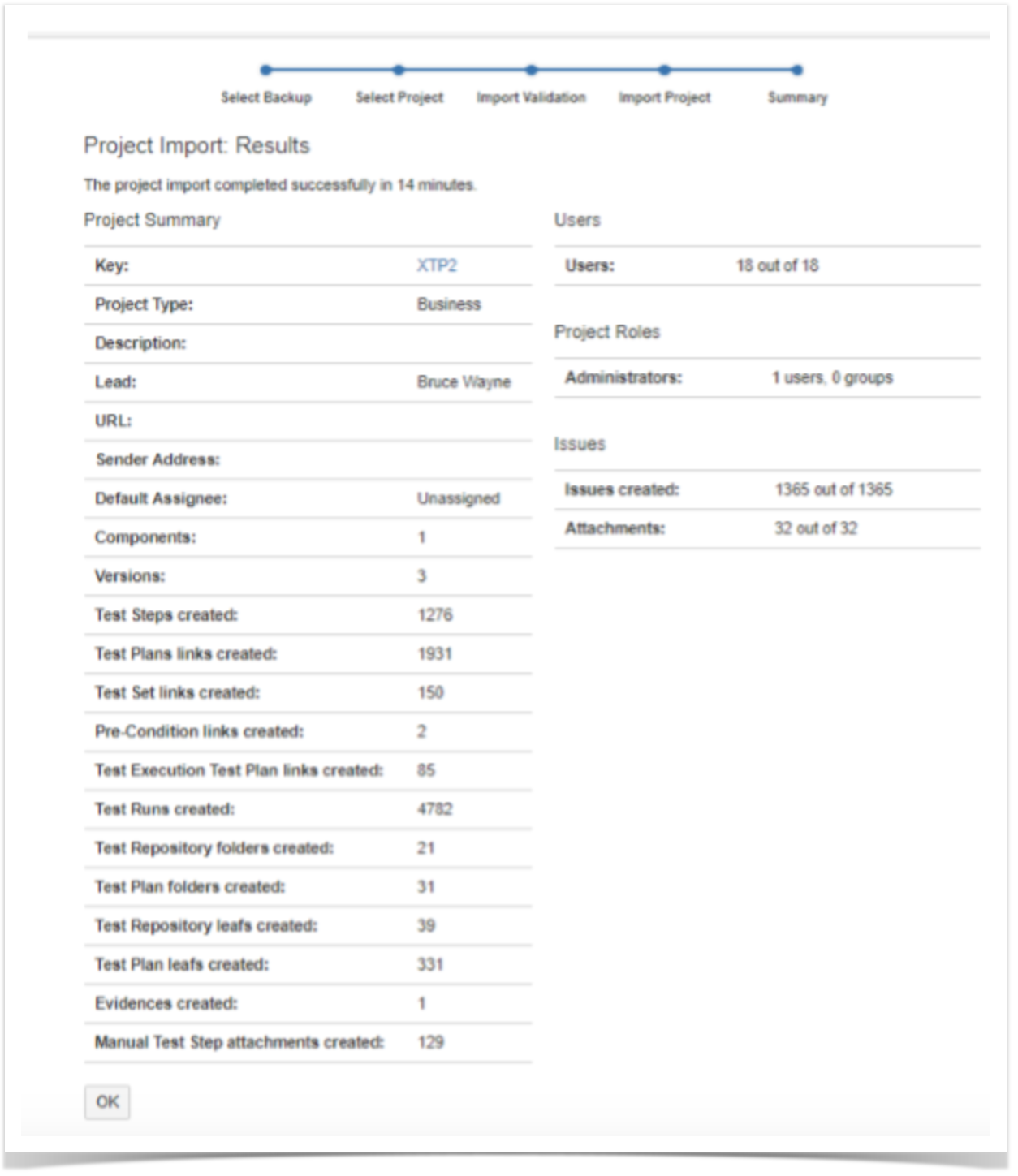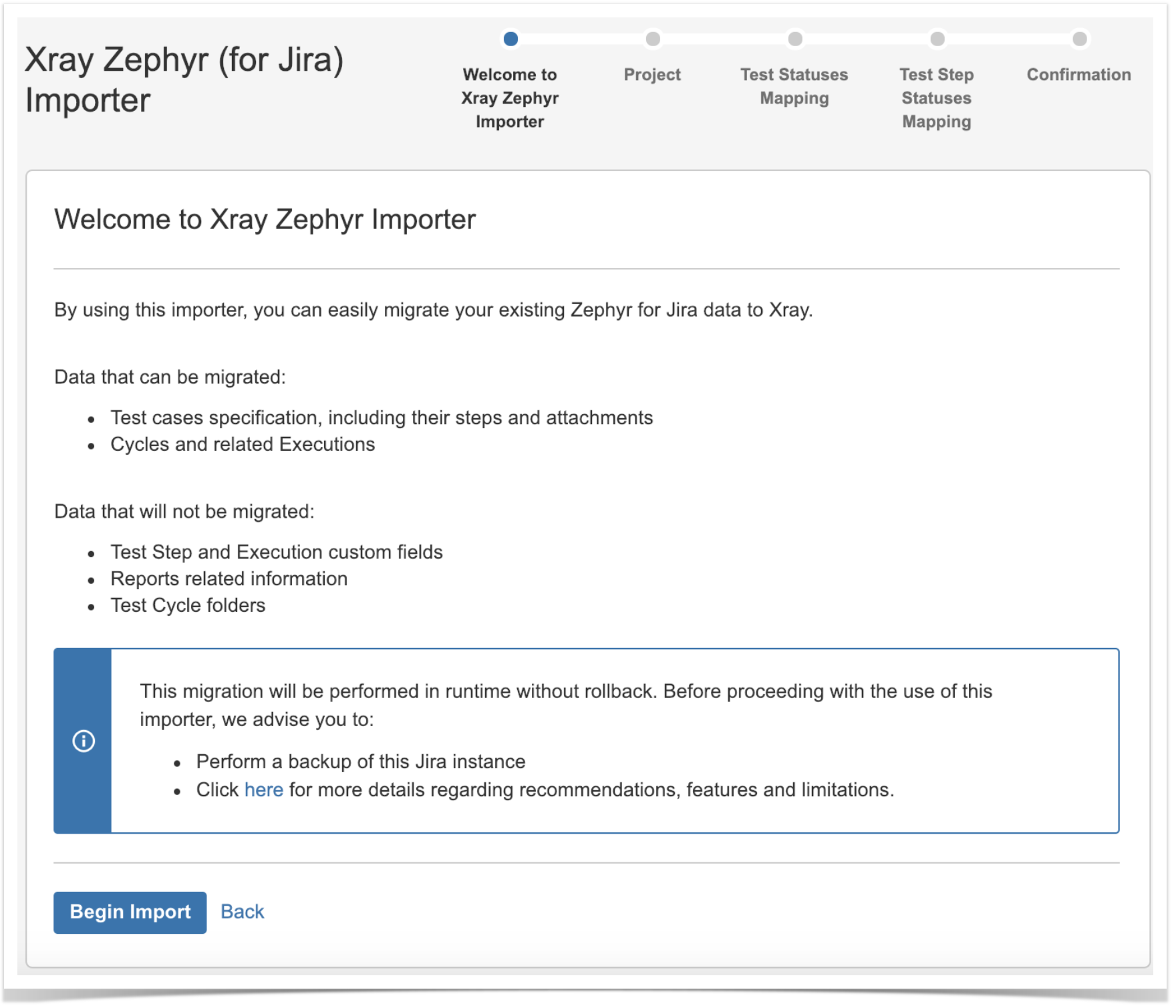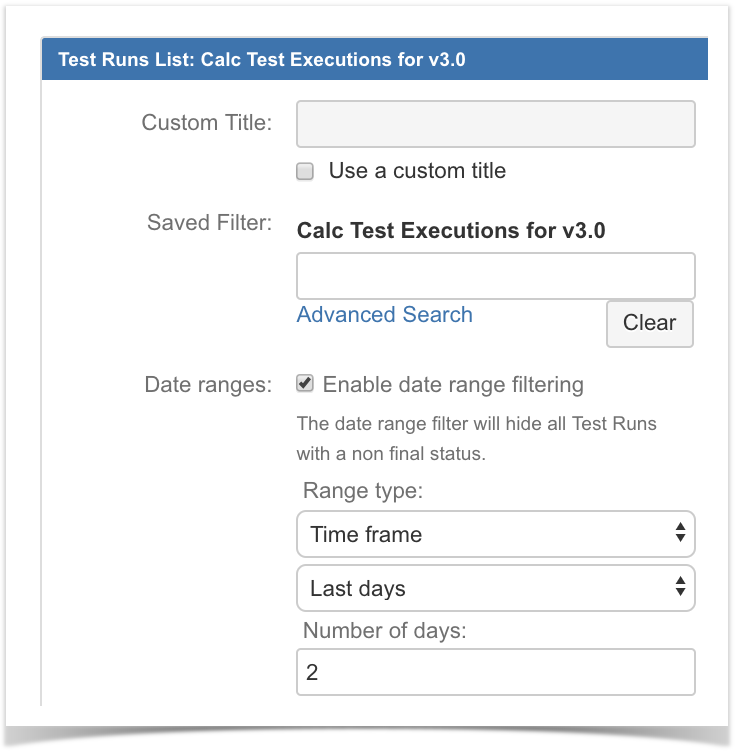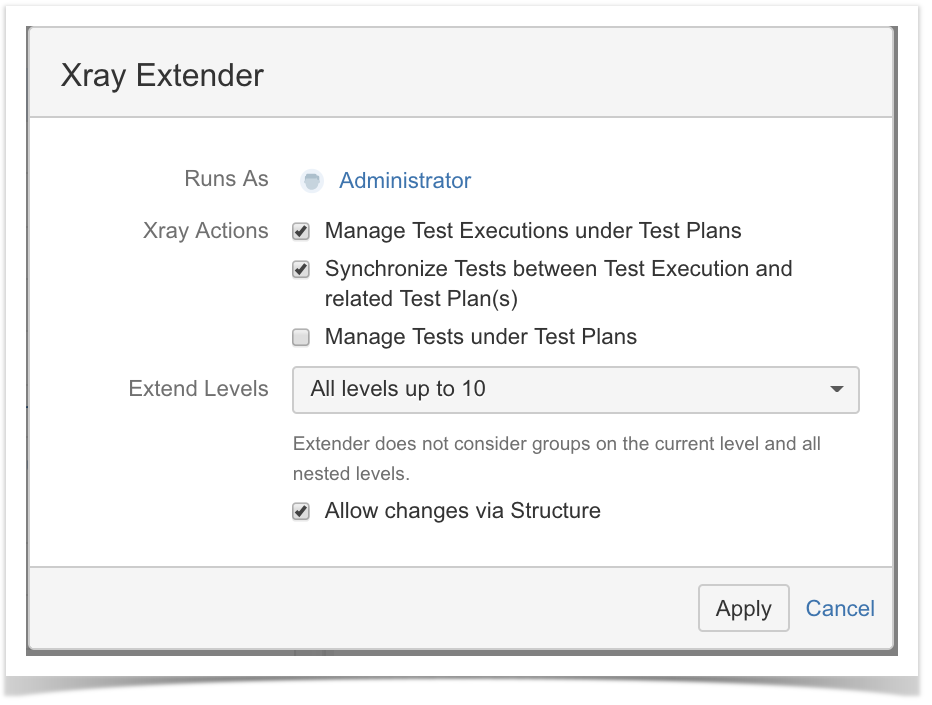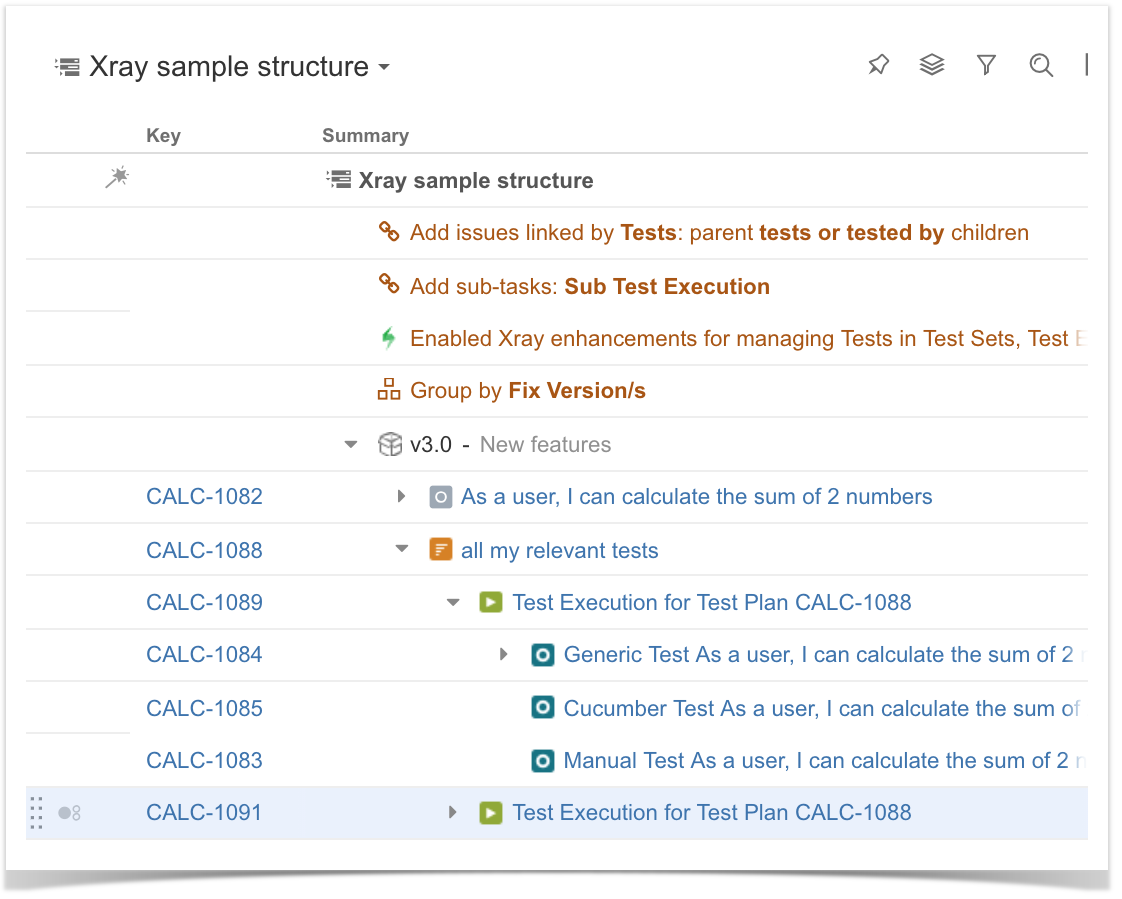Page History
14 January 2019
The Xray team is proud to announce the release of Xray 3.3.0.
The main feature of this version is the ability to easily migrate Xray related information from one JIRA instance to another; you may use Jira's backup&restore facilities to fully restore a project, including testing related data. Besides this, we also include a built-in Zephyr migration utility, so you can start taking advantage of Xray right-away.
Users using Structure will love the new enhancements available in the Xray extender, which now will also include the ability to manage the relation between Test Plans and Test Executions.
We know that the Traceability Report is important and quite useful to you; thus we added quick coverage status based filtering and also the ability to see all requirements at same level, as we had on earlier releases.
As part of our continuous improvement, more performance improvements landed in this version, for the most intensive gadgets/reports and JQL functions.
Discover the key features below
| Table of Contents |
|---|
Upgrading to Xray 3.3.0
After installing version 3.3.0 of Xray, if you upgrade from a version lower than 3.2, this implies that an upgrade task will run to pre-calculate historical data. This action is a one time action and it will run in the background, so that Xray is still available during upgrade. A re-index operation of your Jira instance is required so that the internal data becomes searchable and usable by Xray.
If you upgrade from v3.2.x to v3.3.y, you must recalculate data in Xray configuration section → Custom Fields. This recalculation is necessary because of a huge improvement in the amount of data that Xray need to add to the table and to Lucene indexes.
Downgrading from Xray 3.3.x
Downgrading from Xray 3.3.x to a version less than 3.2.0 implies that you must perform a re-index afterwards. This is because from Xray 3.2.0 onwards, the content and format of what Xray indexes has changed.
Release highlights
| Panel | ||||||||||||
|---|---|---|---|---|---|---|---|---|---|---|---|---|
| ||||||||||||
|
| Panel | ||||||||||||
|---|---|---|---|---|---|---|---|---|---|---|---|---|
| ||||||||||||
|
| Panel | ||||||||||||
|---|---|---|---|---|---|---|---|---|---|---|---|---|
| ||||||||||||
|
| Panel | ||||||||||||
|---|---|---|---|---|---|---|---|---|---|---|---|---|
| ||||||||||||
|
| Panel | ||||||||||||
|---|---|---|---|---|---|---|---|---|---|---|---|---|
| ||||||||||||
|
| Panel | ||||||||||||
|---|---|---|---|---|---|---|---|---|---|---|---|---|
| ||||||||||||
|
And more...
| JQL | REST API | Xporter |
|---|---|---|
|
|
|
New Features and Bug Fixes in this release
| Jira | ||||||||||
|---|---|---|---|---|---|---|---|---|---|---|
|


